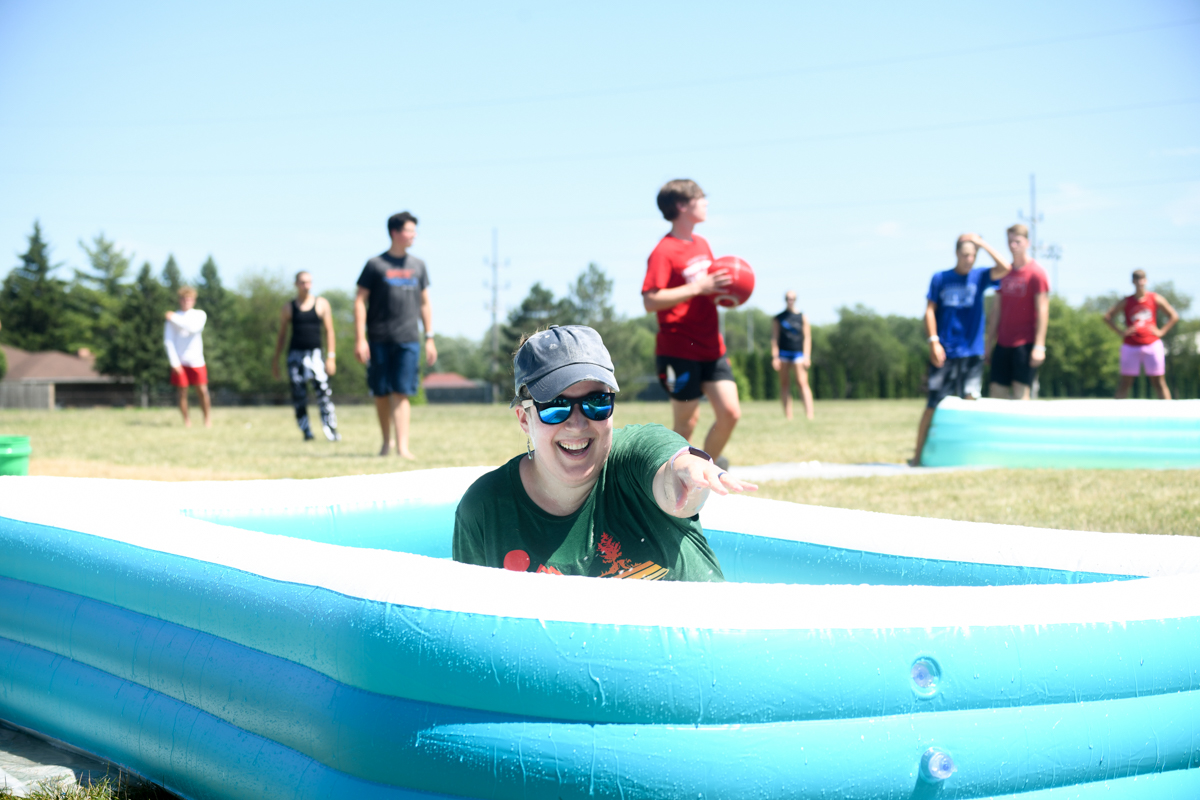Icebreakers are a key tool in youth group settings to break social barriers and encourage openness. When young people gather, they often feel shy, especially if they are new to the group. Icebreakers offer a fun, low-pressure way to help youth feel comfortable and relaxed. By starting with icebreakers, leaders can create a welcoming atmosphere that promotes more meaningful interactions.
Icebreakers also increase participation and build stronger community bonds within the group. These activities encourage teamwork, communication, and trust among the youth. As they engage, they begin forming connections with their peers. These connections lead to better relationships and more active participation in group discussions.
Icebreaker #1: Two Truths and a Lie
Description:
Two Truths and a Lie is a classic icebreaker that encourages participants to share fun and surprising facts about themselves. Each person takes turns stating two true facts and one false statement, and the group tries to guess which one is the lie. This game works well in both small and large groups.
Purpose:
The goal of this icebreaker is to help youth get to know each other on a deeper level. By sharing unique facts, participants reveal more personal details, sparking conversations and building trust. It also adds an element of fun as everyone tries to guess the lie, promoting active engagement.
Instructions:
Have each person think of two true facts about themselves and one lie. Participants take turns sharing their three statements with the group. The rest of the group discusses and votes on which statement they think is the lie. After the vote, the person reveals the truth. Continue until everyone has had a turn.
Tips for Success:
Encourage participants to be creative with their facts to make the game more fun and challenging. Keep the pace moving quickly to maintain energy. Make sure the group is comfortable with each other so that sharing personal facts feels safe.
Icebreaker #2: Human Knot
Description:
Human Knot is an interactive and physically engaging icebreaker that requires teamwork and problem-solving. Participants stand in a circle, reach across to grab hands with others, and then try to untangle themselves without letting go. It’s a great way to get youth moving and working together.
Purpose:
The purpose of Human Knot is to promote collaboration and communication. It encourages participants to work as a team, practice problem-solving skills, and communicate clearly to achieve a common goal. This icebreaker helps break down social barriers and build trust.
Instructions:
Have the group stand in a circle and instruct everyone to reach across and grab the hands of two different people. Without letting go, the group must work together to untangle themselves into a single, unknotted circle. If a knot seems impossible, allow the group to swap hands with new people to continue.
Tips for Success:
Make sure the group isn’t too large—6-10 people work best. Encourage communication and teamwork throughout the activity. Provide light guidance but let the group solve the problem themselves. Keep it fun and stress-free by reminding them that it’s okay if they get tangled!
Icebreaker #3: Would You Rather
Description:
Would You Rather? is a simple but effective icebreaker that presents participants with two choices, and they must choose which one they’d prefer. The options can be lighthearted, funny, or even thought-provoking, depending on the tone you want to set.
Purpose:
The purpose of this icebreaker is to encourage conversation and reveal personal preferences in a fun way. It helps participants learn more about each other and sparks discussions that can lead to deeper conversations. It’s also an excellent way to warm up a group before more serious activities.
Instructions:
Prepare a list of “Would you rather?” questions (e.g., “Would you rather be able to fly or be invisible?”). Read each question aloud, and participants choose their answer by raising their hand or moving to a side of the room that represents their choice. After each question, allow a few people to explain their reasoning.
Tips for Success:
Keep the questions light and fun, especially at the beginning, to make everyone feel comfortable. Tailor the questions to your group’s interests and age range. Don’t be afraid to mix in some humorous or outrageous options to keep the energy high.
Icebreaker #4: Name That Tune
Description:
Name That Tune is a musical icebreaker where participants listen to short clips of songs and try to guess the title or artist. This game works well with both modern and older songs, depending on your audience, and can create lots of energy and excitement.
Purpose:
The purpose of this icebreaker is to energize the group and encourage active participation. It’s especially useful for youth who enjoy music and pop culture. It also promotes quick thinking and friendly competition, helping break the ice in a fun, dynamic way.
Instructions:
Prepare a playlist of song clips, each around 10-15 seconds long. Play each clip, and have participants shout out their guesses for the song title or artist. You can play in teams or have individuals keep track of their own points. Continue for several rounds and award a small prize to the winner.
Tips for Success:
Choose a variety of music genres to appeal to different tastes. Make sure the clips are recognizable but not too easy to keep the game challenging. If possible, include current hits that the group is likely familiar with. Keep the game moving quickly to maintain high energy.
Icebreaker #5: Speed Friending
Description:
Speed Friending is an icebreaker designed to help participants meet and connect with multiple people in a short amount of time. Similar to speed dating, participants pair up and have brief conversations before moving on to the next person. It’s a great way to ensure everyone gets a chance to interact.
Purpose:
The purpose of Speed Friending is to help youth make multiple connections quickly, promoting inclusivity and reducing cliques. By interacting with many people, participants are more likely to find common ground and form meaningful relationships. It’s especially useful for large groups or new gatherings.
Instructions:
Set up chairs in two rows facing each other. Each pair will have 2-3 minutes to talk before one row shifts to the next person. You can provide conversation prompts to help guide the discussions (e.g., “What’s your favorite movie?” or “What’s one interesting fact about you?”). After several rounds, wrap up by allowing the group to mingle freely.
Tips for Success:
Ensure the timing is short enough to keep conversations engaging but not rushed. Provide conversation prompts to prevent awkward silences. Play some background music to create a relaxed atmosphere. Encourage participants to step outside their comfort zones and be open to meeting new people.
Start Breaking the Ice!
Icebreakers are an essential tool for creating a welcoming and engaging atmosphere in your youth group. By incorporating these activities, you can foster stronger connections, increase participation, and build a sense of community among your students. Whether you use lighthearted games or deeper conversation starters, icebreakers are a powerful way to break down barriers and encourage meaningful relationships.
Ready to take your youth group to the next level? For more fun tips and ideas on building fellowship and community, visit the Momentum Ministry Partners website. You’ll find resources that will help you create an even more vibrant and connected group!







0 Comments